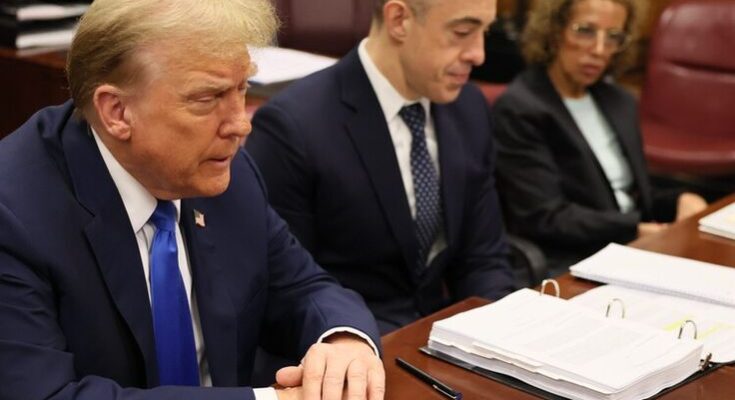In a significant and controversial move, former President Donald Trump signed a series of tariffs targeting key U.S. trading partners—Canada, Mexico, and China—marking a dramatic shift in American trade policy. These tariffs, which were implemented during his presidency, were part of Trump’s broader “America First” agenda, aimed at protecting domestic industries, reducing trade deficits, and renegotiating what he deemed unfair trade agreements. While the tariffs were celebrated by some as a necessary step to safeguard American jobs and industries, they were also met with widespread criticism from economists, businesses, and U.S. allies, who warned of potential economic fallout and strained international relations.
The Rationale Behind the Tariffs
Trump’s decision to impose tariffs on Canada, Mexico, and China was rooted in his belief that the U.S. had been taken advantage of in global trade. He argued that decades of unfair trade practices, such as intellectual property theft, currency manipulation, and subsidized exports, had harmed American workers and industries. By imposing tariffs, Trump sought to level the playing field and force trading partners to renegotiate terms that were more favorable to the United States.
The tariffs were also part of Trump’s broader strategy to reduce the U.S. trade deficit, which he viewed as a sign of economic weakness. By making imported goods more expensive, Trump hoped to encourage consumers and businesses to buy American-made products, thereby boosting domestic manufacturing and creating jobs.
Tariffs on Steel and Aluminum: Targeting Canada and Mexico
One of the most significant actions taken by the Trump administration was the imposition of tariffs on steel and aluminum imports. In March 2018, Trump announced a 25% tariff on steel and a 10% tariff on aluminum, citing national security concerns under Section 232 of the Trade Expansion Act of 1962. While the tariffs were global in scope, they particularly targeted Canada and Mexico, two of the largest suppliers of steel and aluminum to the United States.
The decision to impose tariffs on Canada and Mexico was met with immediate backlash. Both countries are key U.S. allies and trading partners, and the tariffs were seen as a betrayal of the longstanding North American trade relationship. Canada and Mexico responded swiftly with retaliatory tariffs on a range of American goods, including agricultural products, steel, and consumer goods. The trade dispute threatened to derail negotiations over the United States-Mexico-Canada Agreement (USMCA), the proposed replacement for the North American Free Trade Agreement (NAFTA).
The USMCA and Tariff Rollbacks
The imposition of tariffs on Canada and Mexico complicated negotiations over the USMCA, which had been a key priority for the Trump administration. The USMCA was designed to modernize NAFTA and address issues such as labor standards, intellectual property rights, and digital trade. However, the tariffs created significant tension between the three countries, with Canadian and Mexican officials insisting that the tariffs must be lifted before they would agree to the new trade deal.
After months of negotiations, the Trump administration eventually agreed to lift the steel and aluminum tariffs on Canada and Mexico in May 2019, paving the way for the USMCA to move forward. The removal of the tariffs was seen as a major breakthrough, and the USMCA was ultimately signed into law in January 2020. While the agreement was hailed as a victory for the Trump administration, critics argued that the tariffs had caused unnecessary damage to the U.S. economy and strained relations with key allies.
The Trade War with China
While the tariffs on Canada and Mexico were significant, the most consequential trade action taken by the Trump administration was the escalation of a trade war with China. In 2018, Trump imposed a series of tariffs on Chinese goods, starting with a 25% tariff on $50 billion worth of imports, including machinery, electronics, and aerospace equipment. The tariffs were later expanded to cover an additional $200 billion worth of goods, with rates ranging from 10% to 25%.
The tariffs were part of a broader effort to address what the Trump administration viewed as China’s unfair trade practices, including intellectual property theft, forced technology transfers, and state subsidies for Chinese industries. Trump also sought to reduce the U.S. trade deficit with China, which had reached a record high of $375 billion in 2017.
China responded to the tariffs with retaliatory measures of its own, targeting American agricultural products such as soybeans, pork, and dairy. The trade war between the two countries escalated over the next two years, with both sides imposing additional tariffs and engaging in a series of negotiations. The conflict created significant uncertainty for businesses and disrupted global supply chains, particularly in industries such as technology and manufacturing.
The Impact of the Tariffs
The tariffs imposed by the Trump administration had far-reaching consequences for the U.S. economy and its trading partners. While the tariffs were intended to protect American industries, they also led to higher costs for businesses and consumers. Studies have shown that the tariffs on Chinese goods, for example, were largely passed on to American consumers in the form of higher prices. A report by the Federal Reserve Bank of New York estimated that the tariffs cost the average American household $831 per year.
The tariffs also had a significant impact on U.S. farmers, who were hit hard by China’s retaliatory measures. Soybean farmers, in particular, saw a sharp decline in exports to China, which had been their largest market. In response, the Trump administration provided billions of dollars in subsidies to farmers to offset their losses. However, critics argued that the subsidies were a temporary fix that did not address the underlying issues caused by the trade war.
The tariffs also strained relations with key U.S. allies, particularly Canada and Mexico. While the USMCA ultimately helped to repair some of the damage, the tariffs left a lasting impression on the North American trade relationship. Similarly, the trade war with China created significant tension between the two countries, with implications for global trade and geopolitics.
The Broader Implications of Trump’s Trade Policy
Trump’s use of tariffs marked a significant departure from the free trade policies that had dominated U.S. trade policy for decades. While previous administrations had generally sought to reduce trade barriers and promote globalization, Trump’s “America First” approach prioritized protecting domestic industries and reducing trade deficits. This shift in policy reflected a broader skepticism of globalization and multilateral trade agreements, which Trump argued had failed to deliver for American workers.
The tariffs also highlighted the challenges of using trade policy as a tool for economic and geopolitical leverage. While the tariffs succeeded in bringing China to the negotiating table and securing some concessions, they also created significant economic costs and uncertainty. The trade war with China, in particular, underscored the risks of escalating trade tensions with a major economic power.
Donald Trump’s decision to impose tariffs on Canada, Mexico, and China was one of the most consequential trade policy actions of his presidency. While the tariffs were intended to protect American industries and workers, they also had significant economic costs and strained relations with key trading partners. The tariffs on steel and aluminum created tension with Canada and Mexico, while the trade war with China disrupted global supply chains and led to higher prices for American consumers.
As the U.S. continues to navigate the complexities of global trade, the legacy of Trump’s tariffs will remain a topic of debate. While some view the tariffs as a necessary step to address unfair trade practices and protect American jobs, others argue that they were a blunt instrument that caused more harm than good. Ultimately, the tariffs underscore the challenges of balancing economic protectionism with the realities of a globalized economy.



